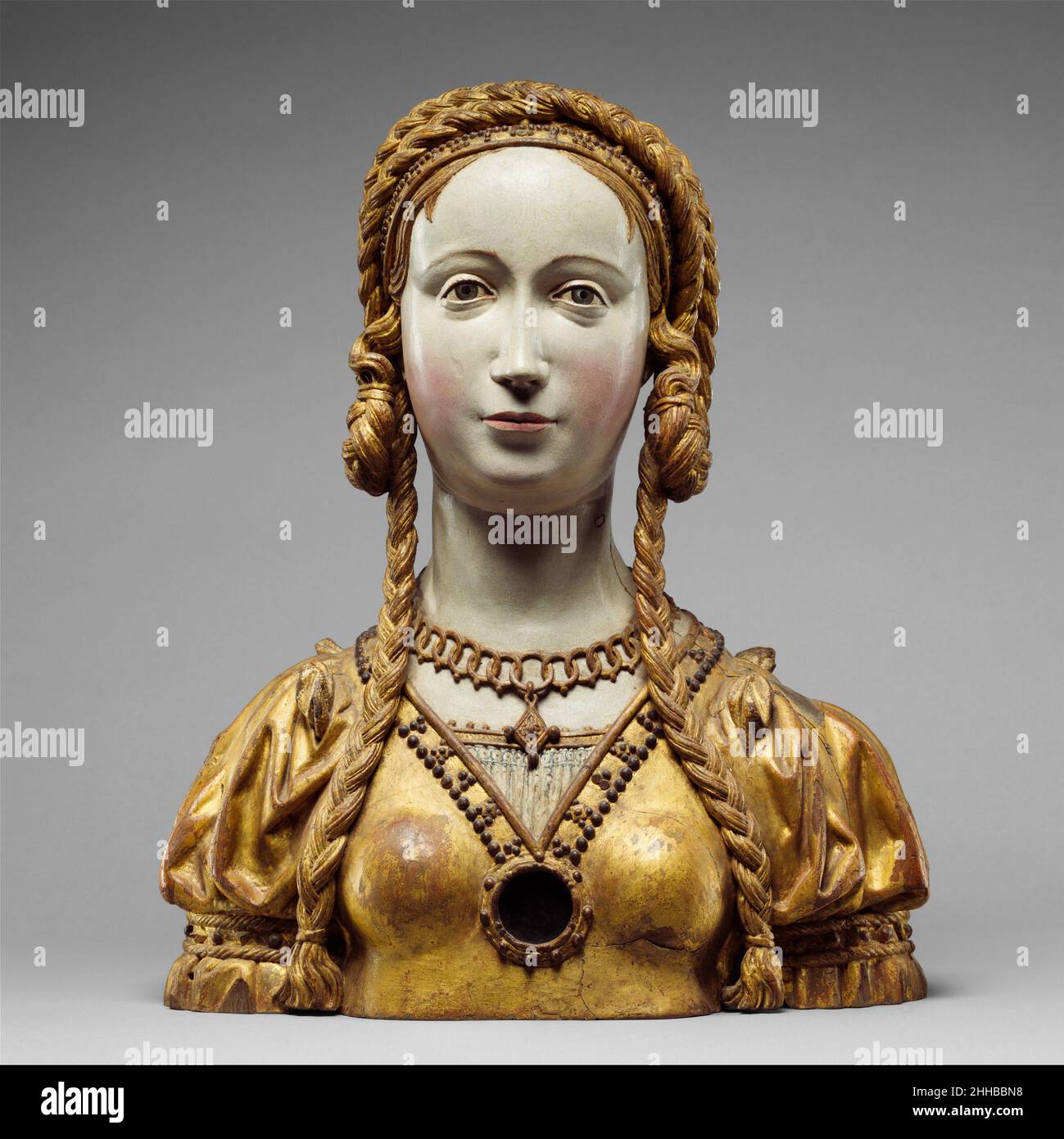Reliquary bust of a companion of Saint Ursula ca. 1520–30 Belgian, possibly Brussels This piece is one of twenty-three related reliquary busts, many of which have a Spanish provenance. In addition to the compartment visible on the saint's chest, a hinged opening at the top of her head gives access to another relic container.Although long believed to be Spanish, this series of busts is closer in style to the work of sculptors from the sourthern Lowlands (Brabant or possibly Brussels), whose influence on Spanish sculpture in the late Gothic period was profound. Some examples may well have been c

Image details
Contributor:
MET/BOT / Alamy Stock PhotoImage ID:
2HHBBN8File size:
41.1 MB (1.4 MB Compressed download)Releases:
Model - no | Property - noDo I need a release?Dimensions:
3791 x 3792 px | 32.1 x 32.1 cm | 12.6 x 12.6 inches | 300dpiDate taken:
22 January 2022More information:
This image is a public domain image, which means either that copyright has expired in the image or the copyright holder has waived their copyright. Alamy charges you a fee for access to the high resolution copy of the image.
This image could have imperfections as it’s either historical or reportage.
Reliquary bust of a companion of Saint Ursula ca. 1520–30 Belgian, possibly Brussels This piece is one of twenty-three related reliquary busts, many of which have a Spanish provenance. In addition to the compartment visible on the saint's chest, a hinged opening at the top of her head gives access to another relic container.Although long believed to be Spanish, this series of busts is closer in style to the work of sculptors from the sourthern Lowlands (Brabant or possibly Brussels), whose influence on Spanish sculpture in the late Gothic period was profound. Some examples may well have been carved in Spain by Brabantine artists who migrated to Spain during this period of close political and artistic relations at the end of the fifteenth and in the early sixteenth century. Another possible explanation is that the Hapsburg emperor Charles V donated the pieces to Spanish churches, or that Spanish officials at his court in Brussels acquired the pieces and brought them back to Spain.. Reliquary bust of a companion of Saint Ursula 193612